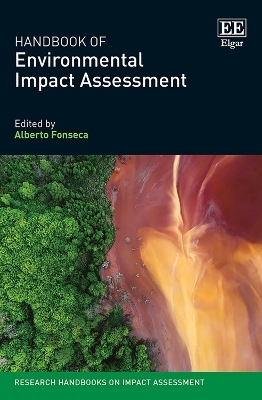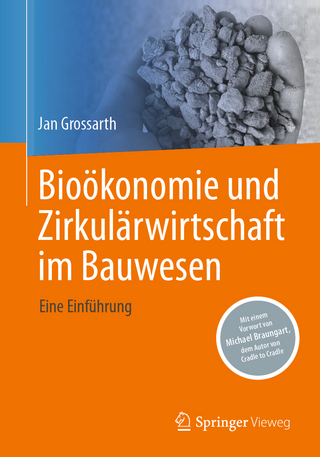
Handbook of Environmental Impact Assessment
Edward Elgar Publishing Ltd (Verlag)
978-1-80037-962-6 (ISBN)
In addition to explaining the practicalities of the EIA process, chapters delve deep into EIA’s decision-making stages and methods, revealing the causes of, and solutions to, recurrent issues. Contributions from leading scholars analyse case studies from Africa, Asia, Europe, Oceania, and North and South America to provide a truly global picture of EIA implementation. Critically examining the laws, policies and procedures involved in these case studies, this Handbook concludes by highlighting new ideas, trends and methods in the field.
With a global scope, the illustrative case studies and critical evaluations will prove a useful resource for students and scholars of environmental and management studies and law. Exploring how to implement best practices, it will prove invaluable to EIA practitioners, including consultants, developers and regulators, offering inspiration and guidance for policy reforms.
Edited by Alberto Fonseca, Associate Professor of Environmental Impact Assessment, Department of Environmental Engineering, Federal University of Ouro Preto, Brazil
Contents:
PART I CONCEPTUAL FOUNDATIONS AND EVOLVING ROLES
1 Introduction to the Handbook of Environmental Impact Assessment 2
Alberto Fonseca
2 NEPA in the United States: death by extremism or redesign of a more
useful tool? 28
Michael R. Greenberg and Stuart Shapiro
3 Impact assessment in the post-COVID-19 world: the growing role of
health impact assessment 47
Mirko S. Winkler, Adithya Pradyumna, Francesca Viliani and Astrid M. Knoblauch
4 Integrated impact assessment: coming out of the shadows? 66
Richard K. Morgan
PART II STAGES AND METHODS
5 Influence of EIA on project planning and design: exploring the gap
between best and actual practice 86
Claire Gronow
6 The theory and practice of scoping: delivering proportionate EIA reports 111
Urmila Jha-Thakur, Fatemeh Khosravi and David Hoare
7 The benefits and perils of digital and automated technologies: impact
assessment methods in the fourth industrial revolution 126
Alberto Fonseca
8 A new agenda for significance determination in EIA: promoting
community-based determination processes to counterbalance
technocratic approaches 146
Sara Bjørn Aaen, Ivar Lyhne and Helle Nedergaard Nielsen
9 Artificial intelligence solutions for environmental and social impact
assessments 163
Atiyah Curmally, Blaise W. Sandwidi and Aditi Jagtiani
10 Mitigating climate change through impact assessments: critical
reflections from Canadian policy reform 178
Karine Péloffy, Nicholas Zrinyi and Rosa Galvez
11 Follow-up: post-decision learning in EIA 198
John Glasson
PART III IMPROVING GOVERNANCE AND DECISION-MAKING
12 Uncertainty in EIA 220
Sanne Vammen Larsen
13 Trade-offs in impact assessment design and implementation 233
Robert B. Gibson and Alberto Fonseca
14 Heuristics and bias in assessing the social impacts of energy projects 258
Douglas L. Bessette
15 Rightful resistance and activism through EIAs in Chile 270
Rajiv Maher and Diego Gálvez Pino
16 Indigenous Peoples and impact assessment 285
Philippe Hanna, Cássio Ingles de Sousa and Tumanako Fa’aui
17 Trends in EIA effectiveness research 303
John J. Loomis and Mauricio Dziedzic
PART IV GLOBAL PRACTICE
18 EIA best practice in Africa 320
Luke Sandham, Francois Retief and Reece Alberts
19 EIA in Finland: the influence of international norms on the founding
and evolution of national impact assessment systems 337
Timo Koivurova, Katri-Maaria Kyllönen and Krittika Singh
20 EIA in Canada: strengthening follow-up, monitoring and evaluation 352
Patricia Fitzpatrick and J. Byron Williams
21 EIA in Japan: the benefits of early public participation 366
Tetsuya Kamijo
22 Environmental impact assessment in Brazil: a review of its rise (and fall?) 383
Luis E. Sánchez and Carla Grigoletto Duarte
23 EIA in China: evolution and challenges 404
He Xu, Yiting Yang, Huanzhi Wang and Xueyan Guo
PART V LOOKING FORWARD
24 The importance of leadership in impact assessment 423
Ross Marshall and Maria Partidário
25 Epilogue (The future of impact prediction: what to expect from EIA in
the next 50 years?) 441
Alberto Fonseca
Index
| Erscheinungsdatum | 09.09.2022 |
|---|---|
| Reihe/Serie | Research Handbooks on Impact Assessment series |
| Verlagsort | Cheltenham |
| Sprache | englisch |
| Maße | 169 x 244 mm |
| Themenwelt | Schulbuch / Wörterbuch ► Lexikon / Chroniken |
| Naturwissenschaften ► Biologie ► Ökologie / Naturschutz | |
| ISBN-10 | 1-80037-962-5 / 1800379625 |
| ISBN-13 | 978-1-80037-962-6 / 9781800379626 |
| Zustand | Neuware |
| Haben Sie eine Frage zum Produkt? |
aus dem Bereich


